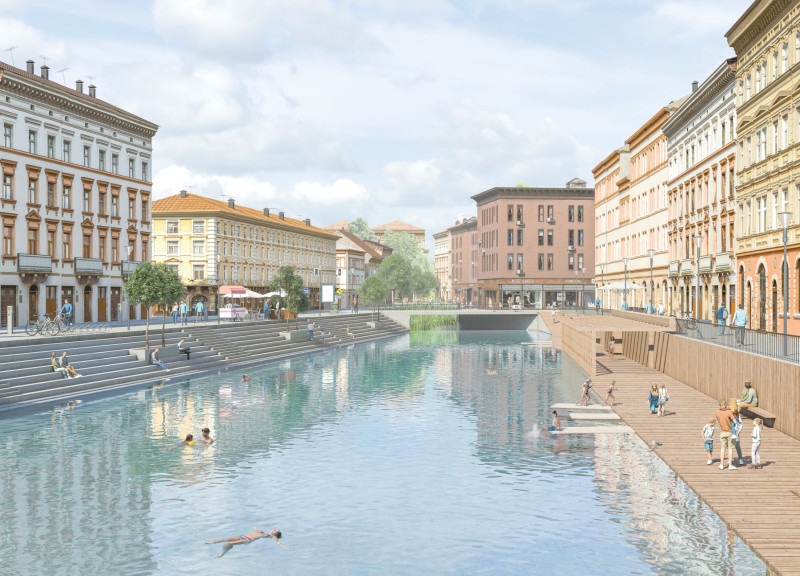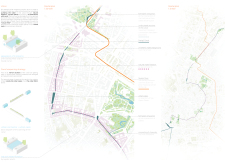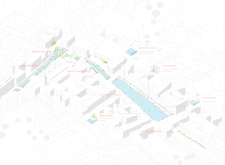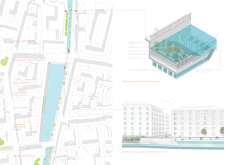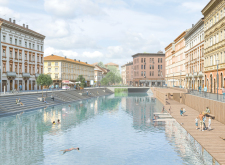5 key facts about this project
The core function of this project is to restore the Navigli Canal and integrate it with a natural water purification system. This system separates the polluted Sieve River from the Navigli Canal, allowing the latter to become an ecosystem that supports both ecological diversity and public recreation. The project facilitates active participation of the community by creating accessible spaces for leisure, education, and cultural activities.
Natural Water Filtration and Community Engagement
A unique aspect of the Canal Reopening Project is its emphasis on natural filtration systems. These systems utilize a combination of aquatic plants and engineered landscapes to purify the canal water, advancing both environmental sustainability and aesthetic value. The inclusion of filtration beds made from crushed stone enhances water quality while providing structural support. This method of utilizing natural elements distinguishes the project from conventional urban water management strategies, as it integrates ecological processes within the urban fabric.
Beyond ecological considerations, the project is designed to promote active community engagement. Multifunctional spaces such as public swimming pools, playgrounds, and amphitheaters are strategically positioned along the canal to foster social interaction. These spaces serve diverse purposes and are designed for inclusive use, thereby encouraging residents to interact with the waterway in meaningful ways. The careful arrangement of access points, including docks and seating areas, allows users to experience the natural beauty of the canal while enjoying recreational activities.
Architectural Features and Design Considerations
The architectural design responds to the need for both functional and aesthetically pleasing elements in the urban landscape. Important features include various ponds throughout the site, which act as gathering points while also supporting ecological diversity. The integration of wood as a primary material for docks and seating enhances user comfort and visual appeal. This choice of materials not only addresses structural needs but also contributes to the overall warmth and atmosphere of the project.
Design considerations extend to how the structure interacts with water. By effectively utilizing cascades and filtration beds, the project promotes a dynamic interaction between the built environment and the natural ecosystem. The incorporation of native plants within the filtration systems not only serves a functional purpose but also adds a layer of biodiversity to the canal landscape, enhancing its ecological integrity.
The Canal Reopening Project stands out as an effective example of integrating ecological design with urban architectural practice. Through its emphasis on natural water filtration and community-oriented spaces, it presents a comprehensive approach to urban revitalization efforts. Interested readers are encouraged to explore architectural plans, architectural sections, and architectural designs related to the project for further insights into its unique features and design methodologies.


